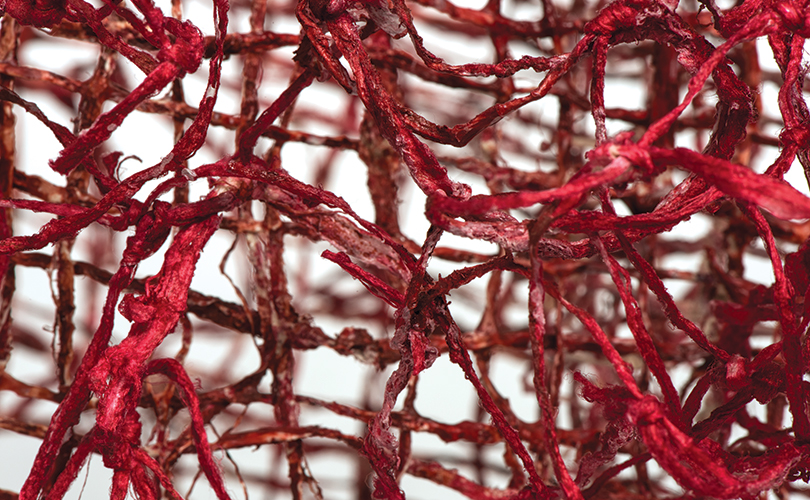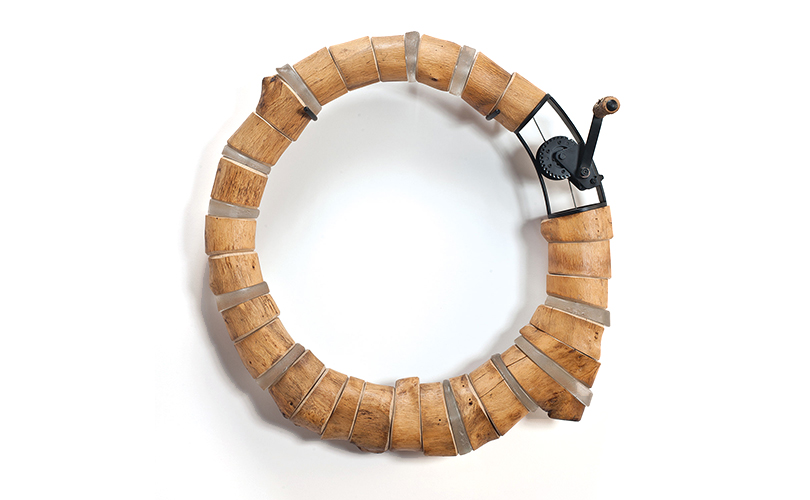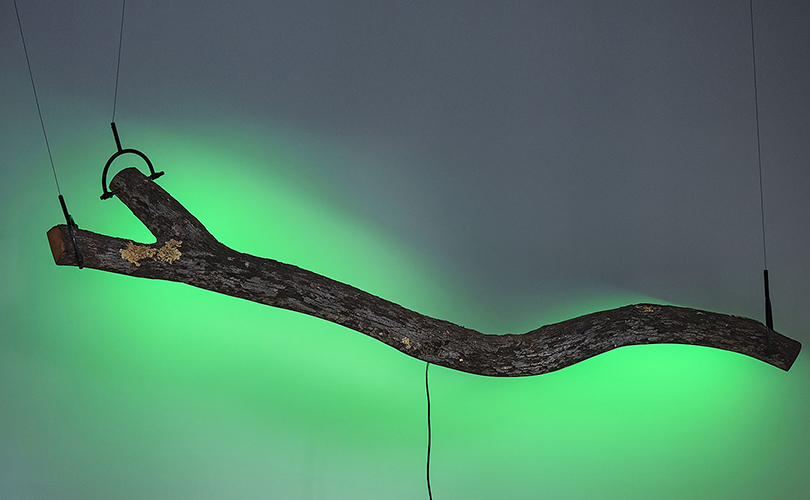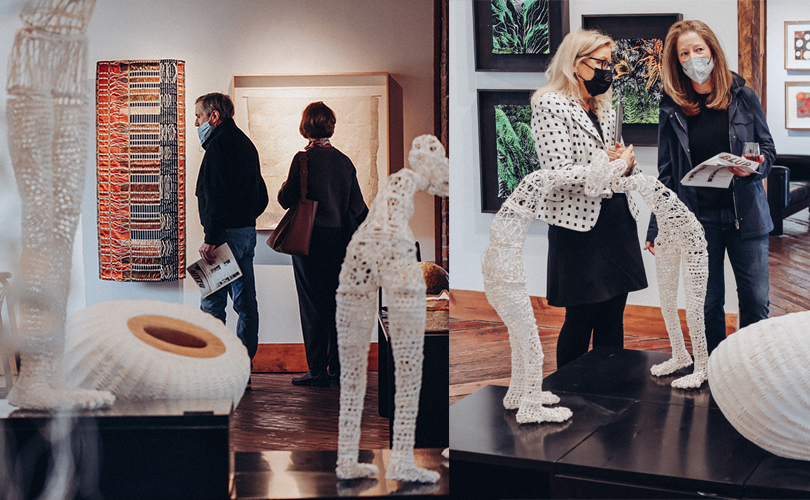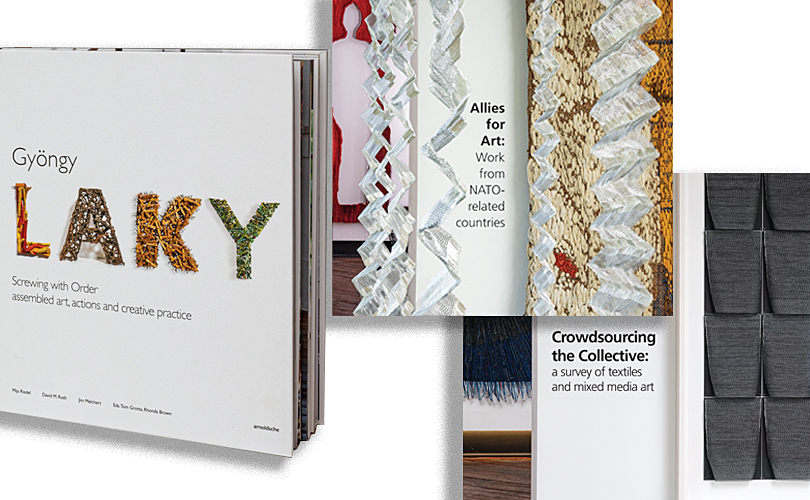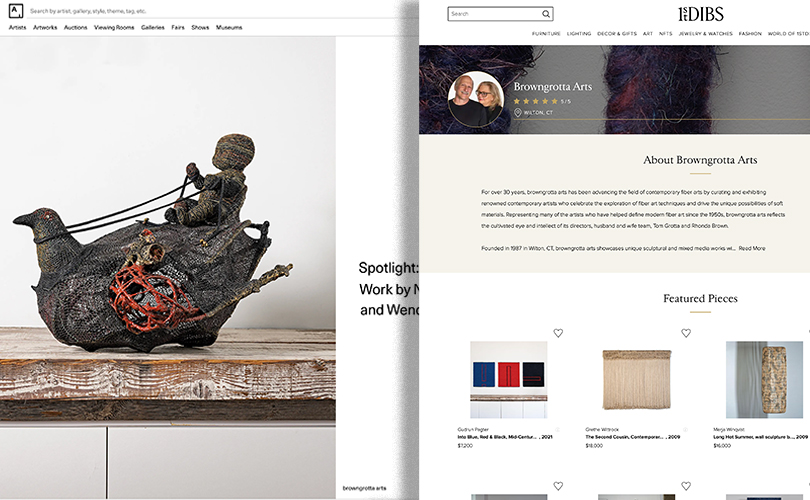Wendy Wahl is one of 10 artists whose work will appear in Papertown, which opens on February 4th at the Fitchburg Art Museum in Massachusetts. Wahl is intentional in her work. She takes a broad sociocultural view of the materials she uses and the meanings that can be advanced through art. Wahl has shared with us information about her process, which we, in turn, are sharing with you:

40.75″ x 30″ x 2.5″, 2022. Photo by Tom Grotta
In general
“By accident or design, my work is about cycles and the rich layers of meaning that an awareness to these fluctuations provides. These pieces continue an idiosyncratic exploration into who we are and our place in time through the use of materials that belong to a collective consciousness. The purpose of paper has changed yet for over two millennia it has played a significant role in the identity of cultures and the relationship to their environments,” says Wahl. “At the turn of the 21st century I began to view printed paper, particularly encyclopedias, from an elemental standpoint and as a material for expressing the ephemeral and the everlasting. Deconstructing volumes of information to reconstruct the parts through embodied knowledge is cyclical in nature.
Encyclopedia pages are used as a material in part because as we know the medium can be the message. If these works are considered landscapes they appear to have captured a moment in some metamorphosis the exact context of which is only suggested. Through movement, a meeting of subtle colors and textures, emotions and ideas emerge that seem to represent fundamental spiraling patterns of existence.”
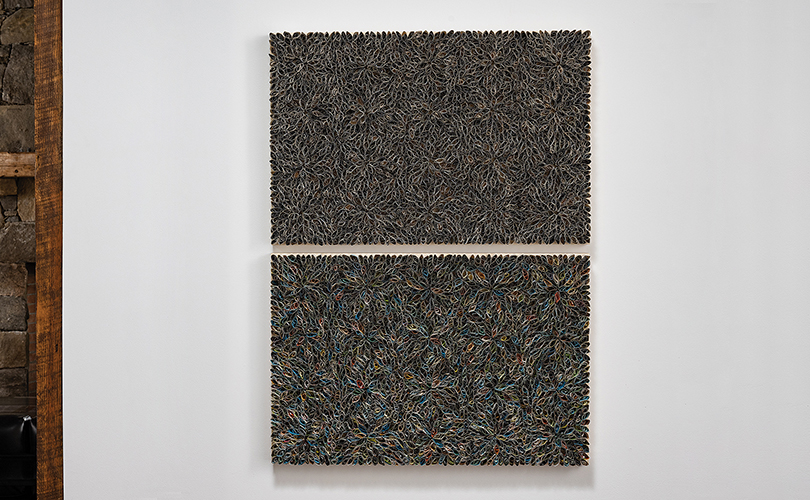
On Re-Seeing
Re-seeing created in 2022 of World Book pages will be exhibited in Papertown at the Fitchburg Museum. It also appeared in Crowdsourcing: a survey of textile and mixed media art at browngrotta arts in 2022. Wahl wrote the following about the work:
“Crowdsourcing information is a relatively recent phenomenon. The Oxford English Dictionary was one of the first projects to make use of the technique 150 years ago. Today Wikipedia is the default digital encyclopedia. The arrival of the latter is one of the reasons why I began, 17 years ago, to transform the contents of original bound encyclopedias into other forms and meanings creating alternative perspectives. This diptych is composed of 1980 World Book pages. Light, dark, color, hidden text and images emerge from the patterned surface inviting a closer look. The work appears to change as the viewer moves toward and around it encouraging the mind and the senses to notice anew. Each time I deconstruct a discarded encyclopedia book, I revisit that which has come before, bound in stillness, yet part of the present moment, asking me to re-see in ways that engage my mind, body and spirit.”

On Bhavantu
Bhanvantu is intriguing in shape and color. Wahl writes about its impetus: “Pushing the chair away and rising from the round table I walk past the open sliding door leading to an outdoor wonderland where my hidden seat awaits behind the banana tree near the fence. Reluctantly I take seven steps away from that view to arrive in front of the built-in shelves where the 1960 something set of Encyclopedia Britannica are held. A through Z ready to be laid open. Collected information, knowledge and experiences offered in printed form. All I could think was: Isn’t everything I need to learn outside? ‘Bring volumes 9 and 17,’ calls the voice from the adjoining room. Decades later, the deconstructed paper from similar volumes feels like home in my hands, or at least my memory of those moments. Removing the pages from their codex can be as jarring as cutting the limbs of a tree. An inward focus directs the spiral parts to be assembled anew as a reminder of the importance of our collective thoughts, words and actions.”
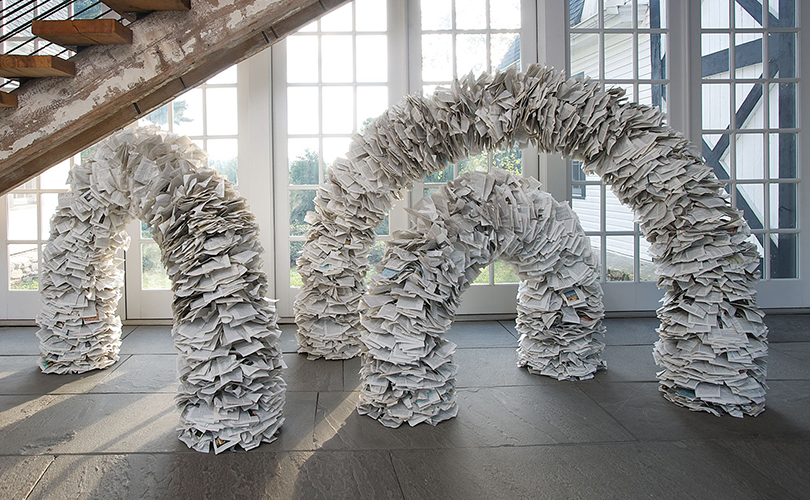
She explains the title: “The title comes from the last part of the Sanskrit sloka: ‘ Lokah Samastha Sukhino Bhavantu.’ It translates in English, too: may all beings be free and may my thoughts words and actions contribute to that freedom. Bhavantu translates more literally: ‘state of unified existence must be so.'”

To see more examples of Wendy Wahl’s work visit our website.

